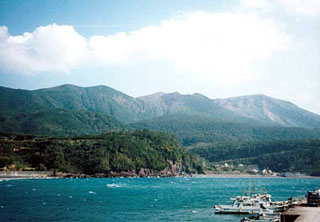Report on Kuchinoerabujima (Japan) — 16 April-22 April 2025
Smithsonian Institution / US Geological Survey
Weekly Volcanic Activity Report, 16 April-22 April 2025
Managing Editor: Sally Sennert.
Please cite this report as:
Global Volcanism Program, 2025. Report on Kuchinoerabujima (Japan) (Sennert, S, ed.). Weekly Volcanic Activity Report, 16 April-22 April 2025. Smithsonian Institution and US Geological Survey.
Kuchinoerabujima
Japan
30.443°N, 130.217°E; summit elev. 657 m
All times are local (unless otherwise noted)
The Japan Meteorological Agency (JMA) reported that the number of shallow volcanic earthquakes increased beneath an area near Kuchinoerabujima’s Furudake Crater with 100 earthquakes recorded during 7-16 April. No changes to geothermal areas located in and around both Shindake and Furudake craters were observed during a field survey conducted on 11 April. Sulfur dioxide emissions were low, averaging 20 tons per day on 11 April, and no ground deformation had been detected since November 2023. The Alert Level was raised to 2 (on a scale of 1-5) at 2325 on 16 April; the public was warned that ejected blocks may land within 1 km of both craters, and pyroclastic flows may affect areas within 2 km of the W flank of Shindake Crater.
Geological Summary. A group of young stratovolcanoes forms the eastern end of the irregularly shaped island of Kuchinoerabujima in the northern Ryukyu Islands, 15 km W of Yakushima. The Furudake, Shindake, and Noikeyama cones were erupted from south to north, respectively, forming a composite cone with multiple craters. All historical eruptions have occurred from Shindake, although a lava flow from the S flank of Furudake that reached the coast has a very fresh morphology. Frequent explosive eruptions have taken place from Shindake since 1840; the largest of these was in December 1933. Several villages on the 4 x 12 km island are located within a few kilometers of the active crater and have suffered damage from eruptions.

